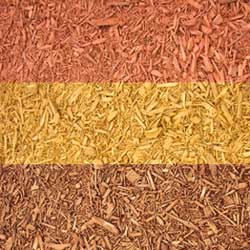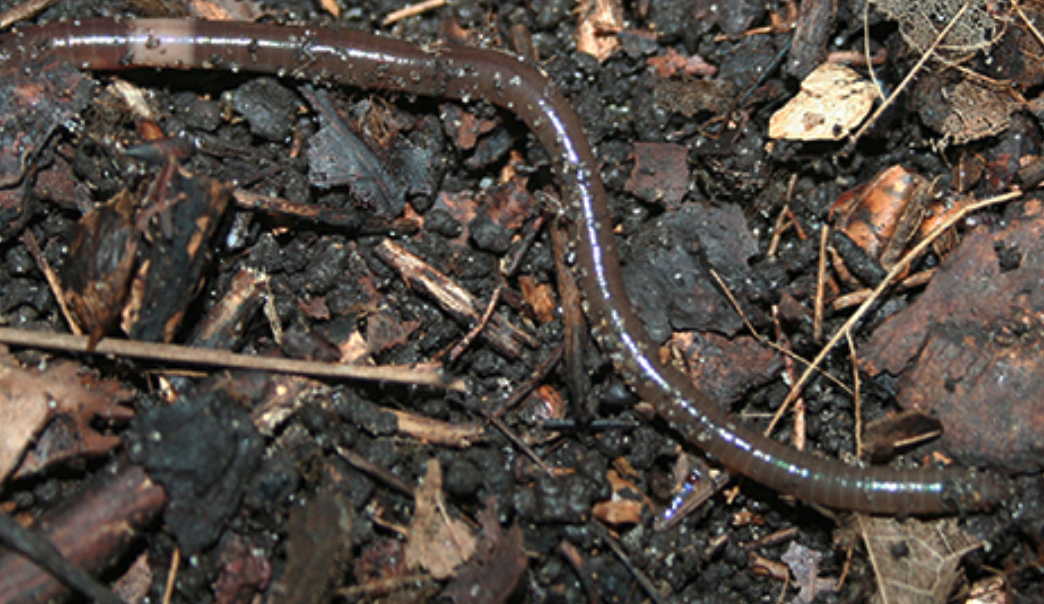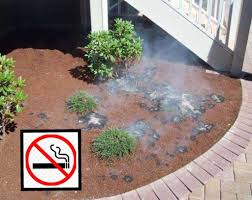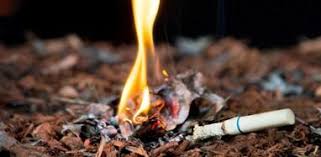Mulch & Soil FAQs
Frequently Asked Questions About Mulch & Soil Products.
Is there Arsenic in my mulch?
Mulch made from natural forest products are generally regarded as arsenic free.
Recycled/reprocessed wood mulch is made from post-consumer or post-industryial products and may contain treated wood such as Construction & Demolition (C&D) material that can sometimes contain CCA (Chromated Copper Arsenate). According to the U.S. Environmental Protection Agency (EPA) these materials should not be ground and used in mulch.
The Mulch & Soil Industry Standards prohibit the use of CCA or any other material whose original manufacturer warns not to grind the product for mulch. All MSC certified products must pass laboratory testing for CCA.

Will cocoa bean mulch harm pets?
Annually, the urban legend describing the death of a dog named Calypso circulates on the Internet. According to the Journal of the American Veterinary Medical Association, the incidence of reported pet illnesses caused by eating cocoa bean mulch is extremely low, and no credible evidence exists regarding pet mortalities.
Because cocoa bean mulch may cause distress in some pets, especially dogs with indiscriminate eating habits, it is not recommended for use around unsupervised pets.
For further information, please visit: ( Journal of American Veterinary Medical Association )

Is it safe to use mulch on my vegetable garden?
It is always helpful to mulch garden beds to inhibit weeds, retain moisture, moderate soil temperatures, and prevent erosion. Mulches made from wood fiber may be sourced in one of three categories:
1. Natural Forest Products: representing virgin wood materials derived as a byproduct of timber harvests and untreated mill operations.
2. Reprocessed/Recycled Wood Products: wood sourced from grinding fabricated consumer or industrial products. Sources may include wood from pallets, construction and/or demolition materials that (1) have not been treated with preservatives, stain or paint; (2) contain no materials whose original manufacturer recommends against grinding or mulching; and (3) are not contaminated with any hazardous or other regulated substances.
3. Mulch Blends: bark, wood products, or reprocessed wood products containing more than one genus or a mix of forest products and/or reprocessed wood that have been mechanically screened and/or shredded. If reprocessed wood products are used in any portion of a blend, such use must be indicated on the product ingredient label.
The source of product ingredients should be displayed on the product packaging and both natural and properly reprocessed wood mulch, or mulch blends, should be suitable for use in a vegetable garden.

Is Cypress mulch sustainable?
The Mulch & Soil Council supports the continuing efforts of the Forest Products Industry to develop and enforce Best Management Practices (BMPs) for loggers and landowners that recognize and promote sustainable forest management.
Currently in Louisiana, cypress forests are growing six times faster than trees are being harvested with 400,000 new cypress trees planted each year and even more naturally regenerated. Cypress trees are not being cut in areas such as flooded swamps where they will not regrow.
Most harvested cypress is sold to sawmills. The by-products from these sawmills are sold to the mulch industry to deal with the disposal of their debris. If landowners cannot market their waste and by-products for mulch, more waste will be left in the forest as a fire hazard or landowner costs for disposal will increase while overburdening landfills for local government.

Are mulch colorants safe?
Summary & Conclusion
Current investigations indicate that mulch colorants pose no threat to people, pets or the environment. The dyes currently used by the mulch and soil industry are similar to those used in the cosmetic and other manufacturing industries (i.e., iron oxide) and pose no health or environmental risk.
Background
In the early 2000’s, occasional media reports surfaced that questioned the human safety of colored mulches. The MSC investigated these claims, undertaking its own detailed studies and literature search. A Colorant Committee was formed in late 2006 and meetings were held throughout 2007.
Mission and Goal
The mission of the committee was to document information on existing or emerging colorants and their components to address any concerns for human health and environmental safety by the public, regulators and media. The goal of the committee was to determine if standards are necessary for certified colored mulches.
Investigational Results
Below is a brief summary of the committee’s investigational findings:
a. Human Safety of Colorants
Iron Oxide (Red):
Iron Oxide is used extensively in facial cosmetics, paints, and other chemicals. It has been used for centuries. Following an extensive review of national and international literature and information, no specific concerns were identified.
Carbon Black:
Carbon black is virtually pure elemental carbon and is used in many consumer and industrial products such as tires, belts, virtually all other rubber goods, video and audiotapes, nearly all electric motors as the brush contacts, insulators, and dry cell batteries. As a pigment, it is used as a toner for paper copiers and printers, inks for newspaper, and in most dark-colored paints and coatings.
Given the wide manufacture of both pure carbon black and products containing carbon black, there is a wealth of information published on the human health aspects of this material. Occupational studies over 60 years do not show any increased health risk to workers exposed to carbon black compared to the general public.
The US EPA also concluded that no special considerations are necessary for carbon black as it pertains to exposure for infants and children. There are no adverse effects for acute toxicity in humans and animal studies. It is considered non-toxic. Also, there were no problems with skin sensitization or eye irritation (beyond a simple physical irritant).
b. Environmental fate
The committee did not find any evidence that any of the components of colorants were an environmental concern when used according to label directions and rates on mulch.
Committee Conclusions
The committee concluded that based on the available toxicological and environmental profiles of the ingredients commonly used in mulch colorants, there appears to be no significant areas of concern in using these materials in general, and in certified mulches.
For further information please visit the following websites:
• ( mulchcolors.com)
• ( Chroma-Insights Blog )

Does mulch attract termites?
Mulch itself does not attract termites. Termites prefer a cool, moist environment. The purpose of mulch is to cool the ground and maintain soil moisture. Mulch can create a suitable environment for termites that already exist in the soil, which can sometimes bring them to the surface and make termites noticeable.
For more information on insects in mulch, download the following report: ( Kansas State Univerity Cooperative Extension Report )
ABOUT JUMPING WORMS
(AKA: Crazy Worms, Alabama Jumpers and Snake Worms)
Overview
Jumping worms (Amynthas spp.) are an invasive species native to eastern Asia. They cause forest ecosystem disturbance and are also troublesome for homeowners and gardeners:
• As their name implies, they jump, wiggle and are very active.
• Jumping worms live in the leaf litter and the top few inches of soil on the forest floor.
• They can be found in much of the Northeast, Southeast and Midwest states.
• They change the soil texture to appear like coffee grounds, strip the soil of nutrients and can kill plants.
• Prevention is the only known way to manage them.
• Jumping worms should be disposed of in the garbage. Do not release them into the environment.
•Research indicates the worm egg cocoons are killed at 104°F temperatures. Primary ingredients of soils and mulches are typically aged or composted at temperatures that exceed 104°F; so, processed soils, compost and mulch are much less likely to contain these pests.
Description
• Jumping worms can be 1.5 to 8 inches or more in length
• They are similar in size to other earthworms such as nightcrawlers or some of the larger angle worms, but their clitellum (collar-like ring) and coloring are different
• The clitellum is located 1/3 the length down the worm from the head, and it is smooth, cloudy-white and constricted, unlike the swelled saddle-like clitellum of European earthworms.
• As their name suggests, these worms may jump and wiggle noticeably when disturbed. They can move across the ground in an “S” pattern like a snake.
• Jumping worms live for only one season:
o They hatch in late spring in 1-4 inches of soil
o The worms grow during the summer and the adults start laying eggs in August
o It is not known how many eggs each adult can lay
o Eggs are very small but can be identified. Removing eggs is likely impractical
Management
There are no pesticides labeled for worms in the United States Prevention is the only known management for worms
Prevention
There are currently no chemical controls or methods to eliminate them from your property. Prevention is the first step in limiting worms spreading in your lawn. Here are a few precautions you can take to help stop the spread of these voracious worms:
• Research indicates the worm egg cocoons are killed at 104°F temperatures. Primary ingredients of soils and mulches are typically aged or composted at temperatures that exceed 104°F; so, processed soils, compost and mulch are much less likely to contain these pests.
• Check your garden beds for jumping worms prior to adding any new landscape products or plants.
• Don’t share plants as you may unintentionally be sharing jumping worms. Although the worms may be easy to see, the cocoon is not. And the last thing you want to do is share these invaders with your gardening friends.
• Don’t move plants from a jumping worm-infested garden to another area. Limiting their spread can help you maintain soil and plant health in non-infested areas.
• Purchase plants from reliable sources and examine plants for signs of these unwelcome pests.
• Clean soil and debris from tools and clothing each time you move from one garden bed to the next. I used one set of tools and pair of boots when working in a garden bed where jumping worms were found. Be sure to clean your boots and clothes before visiting other's landscapes.
Disposal
Jumping worms should be bagged and disposed of in the garbage. Do not release them into the environment.
Additional Information Resources
• University of Minnesota: ( Univ. Minn Jumping Worms )
• University of Nebraska: ( Univ. Nebraska Jumping Worms )
• Minnesota Department of Natural Resources: ( MN DNR on Jumping Worms )

Does Garden Mulch or Potting Soil Spontaneously Combust?
• According to a study done by the Southwest Research Institute (SwRI) in San Antonio, TX, it is EXTREMELY UNLIKELY that mulch or potting soils in a landscape application can auto-ignite or spontaneously combust.
• Put simply, spontaneous combustion occurs when the internal heat-generating temperature of a material combined with the insulating properties of its surface drives the retained heat above the combustion temperature of the material.
• Even though mulch and garden soils are organic materials subject to aerobic respiration that can generate heat, using mulch in a 3” – 4” (or up to 12”) layer cannot generate or retain enough internal heat to exceed the combustion temperature of mulch which is (200°C/ 392°F). There simply isn’t enough mass to cause spontaneous combustion.
The SwRI study also showed:
• The internal temperature of a layer of mulch was only slightly above the ambient temperature of the surface
• That indicates the mulch is not auto-heating but, instead, absorbing the heat from above and cooling the ground
• And that is what it is supposed to do to moderate garden soil temperatures.
Actual Spontaneous Combustion of Mulch:
• Mulch used in landscapes provides too little mass to generate enough heat to spontaneously combust, but
• LARGE storage piles (over 20’ tall) can generate more internal heat than their surface can exhaust which can lead to auto-ignition, or spontaneous combustion
• The Mulch & Soil Council conducts industry training on how to manage large inventory piles to prevent mulch fires at manufacturing facilities
Unfortunately, Mulch Fires Do Occur:
• Social media and the internet are full of stories about mulch fires
• Even news media and some fire departments publish misinformation inadvertently
• No matter how difficult it may be to identify the right source of a mulch or potting soil fire, there has to be an external heat or ignition source to start a fire.
The typical cause of a mulch fire is improperly discarded smoking material such as cigarettes, cigars, pipe ashes, etc. which can smolder for hours after they are thrown into a mulch bed or planter making it more difficult to identify the ignition source.
The most common place for a mulch fire is a:
• Landscape outside a store or building entry
• Parking lot landscape
• Highway median (especially near a stop light or sign)
• Fast food drive-thru landscape
• Similar human traffic locations where people discard smoking materials without thinking.
Other sources of mulch and soil fires include:
Fireworks:
• Fire Crackers
• Sparklers
• Roman Candles
• Anything shooting or cascading sparks
Cooking Grills:
• Hibachi Grills
• Charcoal Grills
• Fire Pits
• Campfires
Outdoor Lighting:
• Landscape Lighting (>12 volt)
• Tiki Torches
• Gas Lanterns
• Candles
• Luminarias
In some of the more unusual fire reports, novel ignition sources include:
• Glass lawn ornaments that focus sunlight like a magnifying glass to create a heating beam and
• Reflections from low energy window glass that can reflect a similar type of focused sunlight.
Do Mulch Colorants Cause Fires?
• NO!
• The colorants used in mulch production are water based and do not contain the same chemicals used in wood refinishing or other processes where the stain can oxidize materials, such as a pile of rags, and cause a fire.
• In the SwRI study, both natural and colorized mulches were tested for their temperature profiles, and there was no significant difference in the temperature characteristics of either natural or colorized mulches.


Why Did My Mulch Color Fade After a Rain?
The timing of landscaping projects is critical to ensure colored mulch retains its intended look. Rapid color loss or “Wash Off” is a widespread issue within the industry, that occurs when colored mulch is put down with inadequate drying time before exposure to water. That leads to frustration from both the end users and the producers, whose reputation is tied to the product.
The fix is simple: colored mulch needs a day to dry. Mulch producers are fully aware of this, but many would benefit by educating their customers on the negative effects of colorant wash off. Such an understanding protects the final product and positions the producer as the trusted mulch expert.
“The number one complaint we get from the field is related to wash off,” says Nick Lincoln, national sales manager at Colorbiotics. “Most consumers don't understand that mulch needs a full day to dry in a landscape setting for color to properly adhere to the mulch. We like to tell people to think about it like painting the outside of their house. You wouldn’t start painting before it rains. The same thing is true of putting down colored mulch.”
While producers rarely have a say when landscaping projects begin, wash off from mulch they produced will inevitably — though inappropriately — reflect on them. For that reason, it is important to communicate the risk of exposure to water while the colorant on the product is still wet.
Rain poses the biggest risk, but there are other factors to consider as well. Sprinkler systems need to be turned off to make sure they don't prevent the mulch from drying, and mornings and evenings with a heavy dew delay the drying process.
“You always want to make sure to put mulch down in dry conditions,” says Lincoln, whose team built a wash off simulation to help drive home the point. “Once the mulch has had a chance to dry, the colorant should be adhered to the mulch to protect it from exposure to water.”
The simple side-by-side demonstration video highlights the difference in wash off between wet mulch and mulch that has been given a full day to dry. Water poured over the dried product remains clear as it passes through the mulch and into a container. Conversely, water poured over the wet mulch immediately takes on the shade of the colorant and fills the container below with a murky, opaque liquid. The woodchips themselves have bare spots from where the colorant washed off.
Giving mulch a full day to dry in a landscape setting ensures the product will continue looking its best once rain eventually falls, resulting in happy consumers and producers alike.